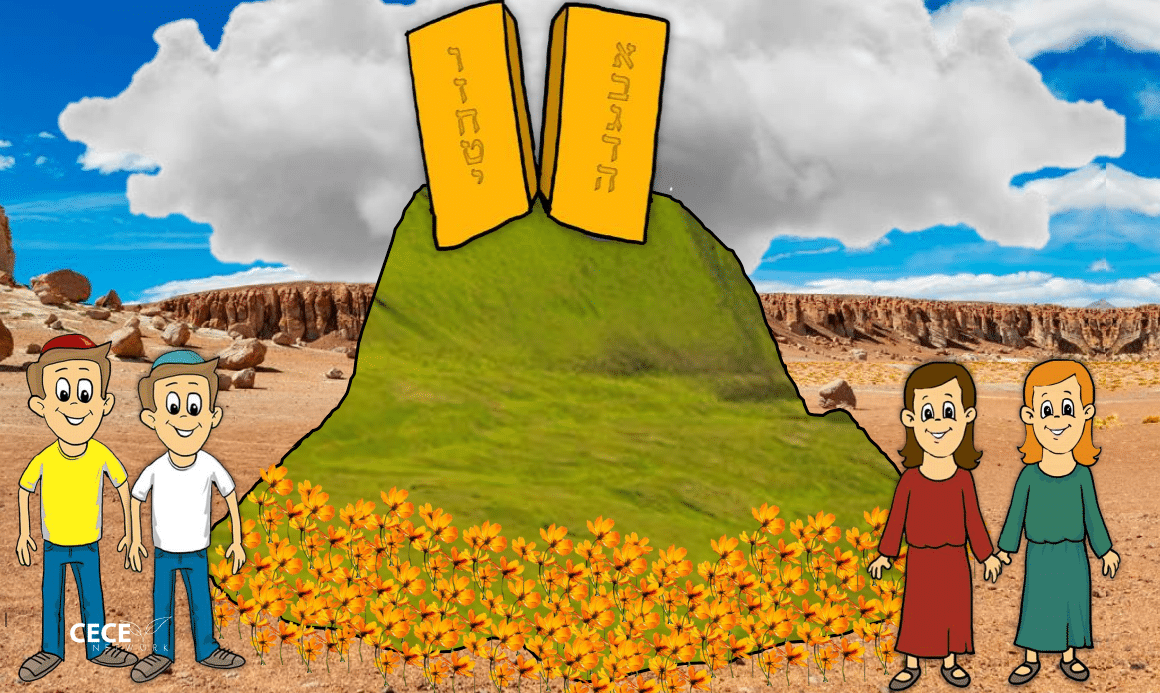
by Liba Rimler
Shavuos is approaching, and the Jewish world is on edge. All normal pre-Shavuos anticipative thoughts of cheesecake have fallen to the wayside. Flowers aren’t occupying our minds. Table decor? For distraction, perhaps.
The rallying cry is not about what kind of desserts we will prepare, and how many guests will grace our tables. Our frenzied mental preparations are not about outfits or shiny new shoes.
For now, communities around the world are waiting to find out only one thing.
Will our children hear the Aseres Hadibros?
Will our children hear the Aseres Hadibros?
Our primary worry is, ironically, appropriate for the situation. This is what Shavuos is all about: receiving the Torah. We’ve learned it and we’ve taught it.
But now, we feel it. And we want it, for real.
Our yearning is raw. We have been counting down since the first day of the Omer. We sing the songs with our children. The forty-nine days of anticipation are coming to a close soon.
What will we tell them if we find ourselves at home?
—
When the world shut down, schools went into survival mode. I learned how to use Zoom and my students quickly adjusted to their new routine. I continued to teach Chumash through video, and taught Haggadah entirely online. We spoke about holding onto faith through crisis. For the first time, this was a lesson that I didn’t have to teach through bringing an example. They lived it.
After Pesach, the world began to wake up to the reality that this wouldn’t be going away anytime soon. It felt like we were coming out of our caves, blinking in the glaring sunshine of a foreign land. Was this really still happening? We could no longer be in denial.
My students and I fell into a new routine. I found that I could connect with them one on one in ways that I hadn’t been able to before. I kept tabs on their individual progress through daily phone calls. My students tapped into their creative sides, preparing beautiful projects and presentations. Their strengths emerged.
Then, one Friday, we found out the news that New York state schools would be closed for the remainder of the school year. It felt like the door being slammed shut in our face. Up until that point, I had harbored hope that we would return back to school, perhaps for the final two weeks, to achieve a sense of closure and celebrate a return to a semblance of normalcy.
But now that was not going to be.
And now, Shavuos. How can I tell my students that we will be receiving the Torah, when we may not be there to witness it at all? How can I tell them that we are continuing a 3,000 year old tradition when we may have to forsake publicly witnessing it?
—
A few days ago, I went to my student’s house to drop something off. We ended up chatting, and I mentioned that she hadn’t called to review her Chumash in a few days.
“So how about we do it right now?” she asked me.
Her eyes were bright and eager.
“Yes,” I said quietly, overcome with a sudden flood of emotion. “Go get your Chumash.”
She went inside to get it, and returned with her papers in tow. We sat down on the front step, sitting a few feet apart. It felt surreal. Here I was, helping my student navigate her Chumash for the first time in months. But this time, we were not under a roof. We were under the sky. I had no whiteboard and she had no desk.
All we had was the Torah.
I had no whiteboard and she had no desk. All we had was the Torah.
She began to read the sacred text in a halting voice. As she asked me questions and I, in typical teacher fashion, asked her questions back, we made our way through the Pesukim. As I looked up at the trees, my mind conjured images of the Baal Shem Tov teaching children Torah in the forests. I thought back to all the stories I had told of Jewish children who faced challenges, be it against the backdrop of war or poverty. And yet—they continued to learn.
And so are we.
This Shavuos, we are accepting the Torah for what it really is: a transcendent bond between G-d and His children. True, it would feel more powerful to show up in person to receive the gift. As we stand six feet apart, we will celebrate the time our ancestors camped together around a mountain. Incongruous? Yes.
But as I have told my students, “like one man with one heart” is not to be taken for its literal meaning. It is a metaphor for our interdependence. Physical proximity is not the basis of the connection. Hashem has our address. He will embrace us where we are.
Hashem has our address. He will embrace us where we are.
The children are our guarantors. They were chosen for good reason. The Torah cannot survive without them.
This year, we will accept the Torah as it is—stripped down to its essence. Let us embrace this opportunity with our families and students.
For as long as we have our children, we will have our Torah—whether it’s taught in a classroom, chanted in a synagogue, or learned under the sky.
Liba Rimler of Pomona, NY is in her second year of teaching at Cheder Chabad of Monsey. She teaches Limudei Kodesh to fourth grade, as well as a middle school creative writing workshop.




